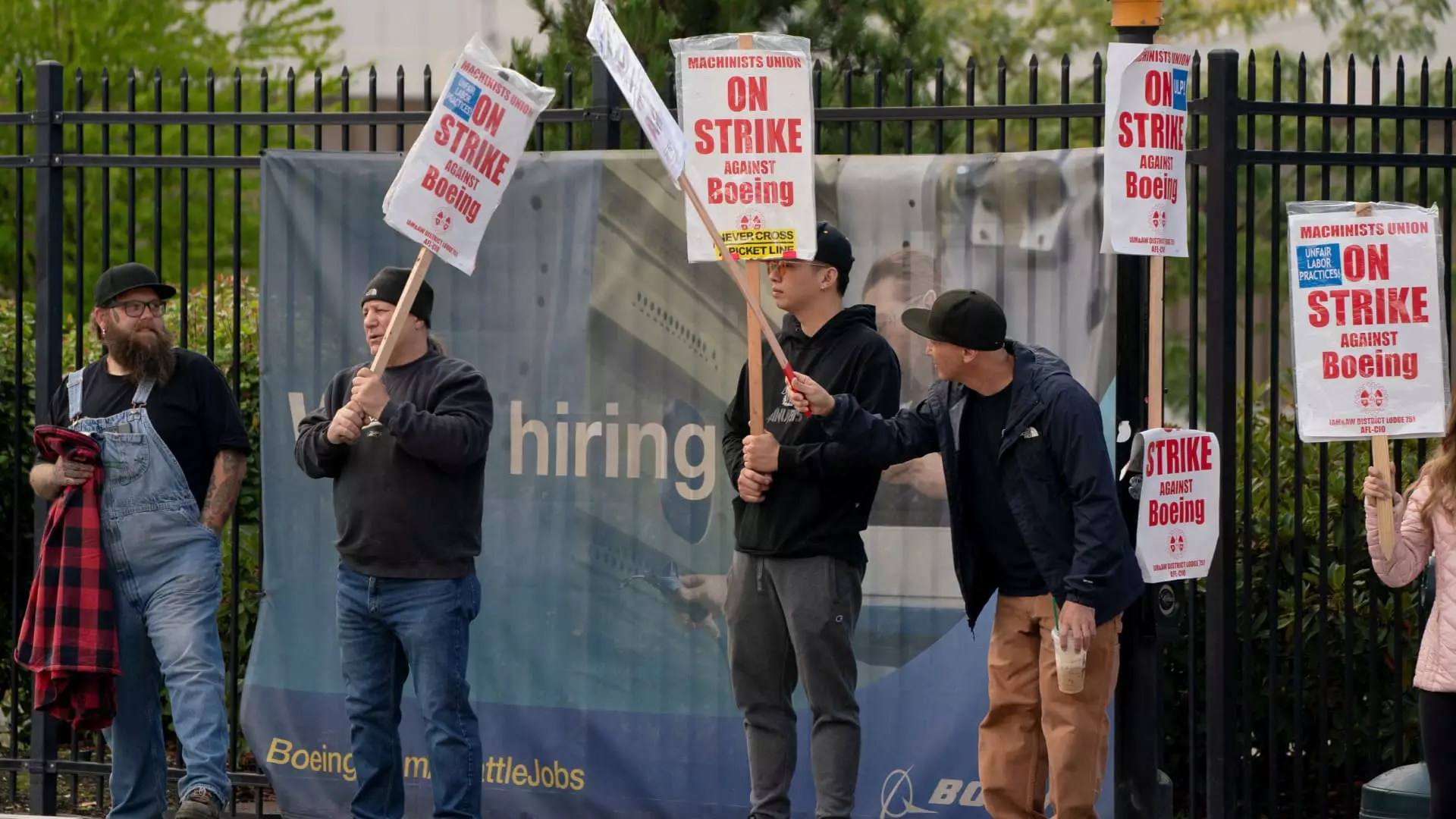Boeing is facing significant operational challenges as it navigates a major strike involving over 30,000 factory workers. The implications of these labor disputes are not just limited to the production lines; they ripple through Boeing’s financial and operational strategies, compelling the company to implement stringent cost-cutting measures. This article analyzes the company’s recent decisions, including a hiring freeze and reduced supplier spending, as management attempts to safeguard its financial health amid turmoil.
The strike, initiated after factory workers overwhelmingly rejected a tentative labor agreement, has resulted in a substantial halt to production at Boeing facilities, particularly in the Seattle area. This disruption underscores the severe stakes at play—not only for Boeing but for the extensive network of suppliers who rely heavily on Boeing for their business. The refusal of workers to accept management’s terms highlights a deeper discord that may affect morale and productivity long-term, amplifying the urgency for Boeing to resolve these disputes expediently.
In response to the labor strike, Boeing has introduced several immediate cost-cutting measures designed to preserve cash flow. Chief Financial Officer (CFO) Brian West detailed significant reductions in spending on suppliers, particularly affecting production associated with their key aircraft models: the 737 Max, 767, and 777. This decision not only demonstrates the gravity of the situation but also sends ripples through the supply chain as hundreds of related businesses brace for the economic impact. By halting purchases and implementing a hiring freeze, Boeing is attempting to cushion its financial vulnerabilities during an unpredictable period.
While the immediate intent of these actions is to conserve cash, the long-term financial implications could prove detrimental. Moody’s and Fitch Ratings have already signaled potential downgrades to Boeing’s credit ratings, raising alarms over how extended labor disruptions could exacerbate the company’s already considerable debt profile. With Boeing having reported an alarming $8 billion cash burn in the first half of the year, the stakes for financial recovery are increasingly precarious.
Boeing’s leadership, now under CEO Kelly Ortberg, is keen to return to the bargaining table to resolve the disputes and restore normalcy to operations. However, the outlook appears grim, as West acknowledged the possibility of temporary furloughs for many employees, adding yet another layer of uncertainty to the corporate landscape. These actions reflect a company’s struggle between managing immediate operational challenges and maintaining long-term viability.
The current strike at Boeing exemplifies the complex interplay between labor relations and business operations. As the company implements critical cost-cutting strategies, the ramifications extend well beyond immediate financial stability. The uncertainty surrounding the resolution of labor disputes raises questions about Boeing’s future production capacity, creditworthiness, and overall market position. As such, the path forward is fraught with challenges, and Boeing’s handling of these labor relations could be indicative of its ability to recover from this crisis in the months and years to come.

Leave a Reply